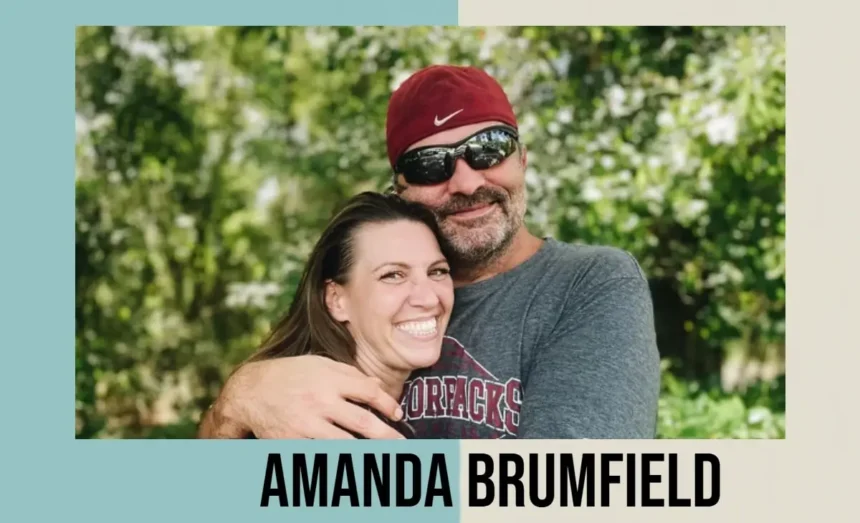When we hear about Amanda Brumfield, the story often begins with her connection to actor Billy Bob Thornton, but her life narrative extends far beyond the shadow of Hollywood. In 2008, Amanda’s world was shattered when a toddler in her care tragically passed away. What followed was a lengthy investigation, a controversial trial, and a conviction that placed her behind bars for nearly a decade. Today, her name sparks debates not only about justice but also about how society should view caretakers, forensic evidence, and the challenges of rebuilding life after incarceration.
Amanda Brumfield’s case is a real-world example of how one event can alter the trajectory of a person’s existence. It highlights the fragility of trust, the power of legal interpretation, and the human capacity for resilience in the face of overwhelming odds.
The Tragic Incident That Changed Everything
In October 2008, Amanda Brumfield was babysitting her best friend’s one-year-old daughter in Orlando, Florida. During the evening, the child reportedly attempted to climb out of her playpen, fell, and struck her head. At first, the injuries did not appear severe. Amanda comforted the child, and when the baby seemed calm and alert, she did not consider the incident life-threatening.
Hours later, the baby became unresponsive. Amanda attempted CPR and called for medical help, but the child was pronounced dead. Doctors discovered a three-and-a-half-inch skull fracture and swelling in the brain. From that moment, Amanda’s life entered a spiral of accusations, investigations, and court hearings.
From Investigation to Conviction
The case against Amanda Brumfield focused heavily on medical testimony. Prosecutors argued that the injuries were too severe to have resulted from a short fall. They suggested abuse or negligence. Amanda, however, maintained that the fall explained the injuries, and she denied any intent to harm.
Her trial took place in 2011. The jury acquitted her of first-degree murder and aggravated child abuse but convicted her of aggravated manslaughter of a child. The court sentenced her to 20 years in prison—a punishment that shocked many observers, especially since she had no history of violence and the case involved so many unanswered questions about the nature of the injuries.
The Controversy Around Forensic Evidence
Amanda Brumfield’s conviction quickly became a subject of debate within legal and forensic communities. Could a fall from a playpen realistically cause such a severe injury? Experts were divided. Some argued that short falls could produce significant head trauma in infants due to the fragility of their skulls. Others insisted the injuries were more consistent with deliberate force.
This dispute highlighted broader concerns about the role of forensic science in the courtroom. In many cases, scientific interpretations can be subjective, and the Brumfield case demonstrated how these interpretations can mean the difference between freedom and decades of incarceration.
Life Behind Bars and the Long Road to Release
Amanda Brumfield began serving her sentence in 2011. For nearly nine years, she lived the reality of prison: separation from her family, limited opportunities, and the heavy stigma of her conviction. During this period, Amanda reportedly worked on her personal growth, participated in prison programs, and maintained her innocence.
Her legal team and advocates continued to push for her release, presenting new perspectives on forensic evidence. Eventually, in 2020, a resolution was reached. Amanda was released from prison after serving less than half of her 20-year sentence.
Life After Prison: Rebuilding and Advocacy
Re-entering society after nearly a decade in prison is not easy. For Amanda Brumfield, freedom meant facing a world that had changed dramatically. Employment opportunities were scarce, public perception was harsh, and the shadow of her conviction lingered. Yet, she also had opportunities to reclaim her life and redefine her story.
Since her release, Amanda has shown interest in advocacy related to wrongful convictions and forensic reform. Her case illustrates how flawed interpretations and circumstantial evidence can alter lives, and she hopes to use her experience to shed light on systemic weaknesses.
Lessons From the Amanda Brumfield Case
Her case offers broader lessons that extend beyond one individual.
Key Issues Raised by the Case:
- Forensic Science Limits: Courts often rely heavily on expert testimony, but science is not always absolute.
- Caretaker Vulnerability: Those responsible for children face immense scrutiny when tragedies occur, sometimes leading to wrongful assumptions.
- Media Influence: Coverage of cases involving family ties to celebrities can skew public perception.
- Justice vs. Mercy: Sentencing should balance accountability with recognition of tragic accidents.
Real-World Insight: How Her Story Reflects Larger Justice System Flaws
Amanda Brumfield’s experience mirrors that of many others who have been convicted under circumstances clouded by uncertainty. According to reports from organizations that study wrongful convictions, forensic testimony is a factor in nearly half of such cases. Her story is not only personal but systemic, reminding society to continually improve how courts use evidence.
The release of Amanda Brumfield in 2020 demonstrates that justice systems can evolve, but it also shows the long-lasting human toll when mistakes are made.
Conclusion
Amanda Brumfield’s journey is one of tragedy, resilience, and a search for redemption. While the death of a child is a wound that can never heal, her story raises important questions about fairness, evidence, and the meaning of justice. Her case serves as both a cautionary tale and a call to action: to demand better forensic practices, more compassionate legal interpretations, and greater support for individuals rebuilding their lives after prison.
FAQs
Q1: Who is Amanda Brumfield?
Amanda Brumfield is the daughter of actor Billy Bob Thornton, known for her conviction in a 2008 child death case.
Q2: What was she convicted of?
She was convicted of aggravated manslaughter in 2011 but acquitted of murder and child abuse charges.
Q3: How long was she in prison?
Amanda served nearly nine years of a 20-year sentence before her release in 2020.
Q4: Why is her case controversial?
Debates over forensic testimony raised doubts about whether the child’s injuries matched an accidental fall or deliberate harm.
Q5: What is Amanda doing now?
Since her release, she has focused on rebuilding her life and has shown interest in advocacy around wrongful convictions.







